
During our month-long dirtbagging trip that brought us to Leonidio, we knew we had to get to this seaside jewel in the Peloponnese, too.
Quiet, serene, charming, isolated; it felt as though we’ve reached end of the world. Kyparissi is simply alluring, calling us to explore, see, feel, stay… Which we did plenty of.
On the shores of a protected cove, with crystal clear water, pebble beaches, whitewashed houses with blue shutters, Kyparissi is the quintessential Greek seaside village, strikingly beautiful and picture-perfect. Its most photographed part is the iconic old port, small and intimate, with boats, colorful flowers, and the sea nearly touching the houses.
For climbers, the cliffs above the sleepy village of Kyparissi are the stuff of dreams. World-class climbing, utterly aesthetic lines, and perhaps some of the most attractive tufas you’ve ever seen. Excellent rock quality, striking views of the sea, traditional Greek vibes, and unspoiled landscapes. What more could you ask for from a climbing trip to Greece?
Simply put, if you’re traveling to the Peloponnese, climbing in Kyparissi should definitely be on top of your list. And here’s all the information you need to plan an epic trip:
In this article
Dirtbagging in Kyparissi

We found a place to sleep on the first beach as you enter Kyparissi driving from Kapsala – Agia Kyriaki Beach, about 3 km from the center of the village. The pebble beach is opposite a small port and is sheltered from the road by an escarpment. We parked the van and we pitched our tents on the side of the beach, under the escarpment, next to some shrubs.
There were two other vans there when we arrived, and they looked as if they were staying for a long time. Other vans came and went while we stayed there. Other tents appeared, too.
Same as in Leonidio, although technically forbidden, wild camping is tolerated during the off-season. Sure, there aren’t many options for wild camping; that’s just how the landscape is, steep and arid. But, all in all, we found Kyparissi to be a good place for us dirtbags.

Every now and then, our friend would go into the sea and fish with a harpoon. He would spend hours on end in the water, thus providing for dinner on many nights.
The sea was pretty calm while we were there. But boy was it noisy… We found out the hard way that sleeping on the beach in Greece isn’t as romantic as it seems. The waves crashing on the pebbles kept us awake for most of the night.
The beach had Wi-Fi, which was actually useful since our data roaming was limited. We had some rainy afternoons while there, which we spent under the tarp, listening to music on our portable speaker. Close to the beach, just across the road, there’s a hotel – Hotel Cavo Kortia. We bought beer from there on a few occasions. On Christmas Eve, we also received some scrumptious, syrupy cakes from the people there. Very nice!
Read more >> Dirtbagging and Climbing in Leonidio, Greece
Kyparissi in a nutshell

A sleepy traditional Greek village in Laconia, on the eastern Peloponnese, Kyparissi gets its name after the charming cypress trees between the tiled roof houses. Everywhere you look, there are pine forests, olive groves, orange orchards, and limestone cliffs. And, of course, the sea.
In ancient times, the settlement was known as Kyphanta. Up until the 1970s, it was fairly isolated from the rest of the world; the only way to reach it was by boat, so the locals led a lifestyle more similar to that of islanders. Then, a steep, spine-tingling road was built round the mountain (more on this below). More recently, a road connecting Leonidio to Kyparissi through Fokiano Bay opened up.
The three parts of Kyparissi
Kyparissi is, in fact, made up of three parts. On the slopes above the coast lies Vrisi, the oldest settlement of the three, built around the 9th century AD when pirates plundered these shores. It cannot be seen from the sea, so it offered some protection from raiders.
The old port and its whitewashed houses with blue shutters and tiled roofs, exhaling an island vibe, are the part called Paralia (“beach” in Greek). This is the most touristic area, with cafes and taverns. It’s also the most picturesque and photographed. Mitropolis is the newest part of Kyparissi, stretching along the coast north of Paralia. A bunch of guesthouses and hotels have been built here in recent years.
Beaches
There are three beaches in Kyparissi – Agia Kyriaki to the north, Megali Ammos (the main beach in Paralia) and Mikri Ammos next to the harbor. All of them are pebble and sand beaches, with crystal clear turquoise water, perfect for snorkeling. There are many other small beaches and hidden coves worth exploring, both north and south of Kyparissi.
Getting around
There aren’t many facilities in Kyparissi. When we were there (December), there was only one supermarket open, at the upper end of Paralia going up to Vrisi. And it wasn’t even open all day, only in the morning and afternoon – location here. It has all the basics, but the options are somewhat limited.
There are two cafes next to the old port in Paralia. There’s a bakery in Mitropolis with delicious homemade desserts. You’ll find a few taverns, too – about 3 in Paralia, 2 in Mitropolis, and one in Vrisi. However, not all may be open during off-season (November-March).
There are no climbing or outdoor shops in Kyparissi, so if you’re short on something, better stock up in Leonidio. There are no ATMs or gas stations, either.
Best time to climb at Kyparissi
Spring and autumn are the best seasons to climb in Kyparissi. In winter, some of the sectors at higher elevations stay in shade and may be too cold or the tufas may get wet. But it is possible to climb at Watermill, Kastraki, and Kapsala in winter. Summers can be too hot.
Some sectors are high up, about 600 meters above sea level, where a cool breeze makes for prime climbing conditions. Most sectors get shade during the day.
For the sectors with tufas, like Babala and Watermill, the best time to climb is autumn, when it’s dry. After heavy rainfall (usually in December-January), the tufas get wet and stay wet for a long time.
We arrived in Kyparissi in December. As we soon learned, that particular winter in Greece was rainy; more so than usual. Unfortunately, the tufas that are emblematic to Kyparissi were wet and there was no sign of them drying out in the near future.
The climbing sectors at Kyparissi

Overview
There are 300+ sport climbing routes at Kyparissi (including Kapsala and The Hideout sectors). New routes are continue to be bolted, and there’s loads of potential for more.
The climbing at Kyparissi is centered around two sectors – Babala and Watermill. But there are other sectors worth visiting, too. Since it’s a fairly new climbing destination, you’ll enjoy great friction on most of the routes, so better get your a** over here before too many people catch on.
Watermill Sector
During our stay, we mostly climbed at Watermill sector, above the village. There’s a lot of variety at this iconic, five-star orange limestone crag. On the left, there’s the renowned overhang covered in tufas and stalactites, with routes from 7a+ to 8b, powerful and aesthetic. To the right, there’s technical climbing on vertical faces, with routes from 5c to 7c.
All in all, this world-class crag has 40+ routes for all levels, with great views of Kyparissi and the Aegean Sea. It’s the most visited sector in the area thanks to its easy access (5 mins.) and variety of routes.
Babala sector
Babala sector is the crown in the jewel of climbing in Kyparissi. This challenging, imposing, world-class crag like a fortress of tufas is a test piece for experienced climbers. In fact, many argue that these are some of the best tufas they’ve ever seen.
There are over 100 routes, mostly in the 8th grade, all the way to 9a and some projects. And there’s room for more!
This long stretch of striped yellow-gray limestone sits high above the village and has five-star lines everywhere you look. Perfect tufas to hug, smooth pinches, sharp crimps, and panoramic views of the sea and rugged coastline await.
The approach takes about 45 minutes on an old trail, and the crag is some 600 meters above sea level. Due to its elevation, many tufas, and the fact that it is in shade, the best time to climb at Babala is in autumn.
Kapsala sector
Not technically in Kyparissi, but close enough to mention it (14 km), Kapsala sector is a huge orange limestone crag right above the Aegean Sea with long, juggy, and pumpy routes, mainly in the 6b to 7b range. Vertical and slightly overhanging, it’ll make those forearms burn like s**t. Then, as you’re being lowered, it’ll feel as though you’re heading straight into the sea. Is that perfection, or what?
Next to Kapsala, The Hideout is part of the same main crag but the approach is different, on a via ferrata. Climb on tufas and pockets just above the sea at this very beginner-friendly sector with routes in the 6a to 6c+ range.
The other climbing sectors in Kyparissi

Kastraki is the only sector that’s right in town, just above the cemetery. Go around the cemetery and follow the path for about 5 minutes. Here, you’ll find routes from 5a to 7a, short and long, on gray limestone, excellent for getting the feel of the place.
Playground sector, a bit further up from Watermill, is a small crag that’s great for beginners, with routes from 5b to 6b on gray limestone slabs.
Tragana sector is somewhat next to Babala, at about the same elevation, and has 20+ routes in total, all above 7b, mostly in the 8th grade, and over 35 meters long. It’s a 25-30 minute approach, depending on which path you choose (there are 3 options).
Psilovrachos sector has mostly hard routes, from 6c to 8b, the bulk in the 7b to 8a range. The approach is easy, as the crag is next to the road. There’s a via ferrata for the routes higher up.
Jerome’s House sector is located right below the road, before entering the village of Harakas, and has routes from 6a to 7c. Next to it, there’s the smaller Stavros sector.
Getting there

There’s no way to reach Kyparissi by public transport. While it’s possible to get to Leonidio by bus, there’s no bus from there to Kyparissi. Ferries cut services decades ago. Also, these roads are not very frequented, especially during off-season when there are pretty much only climbers in the area, so you can’t really rely on hitchhiking either.
You can fly into Athens (ATH) and rent a car from there. If you choose this option, you can set aside a couple of days to visit Athens before heading south. Or you can drive all the way from home, up to you.
From Leonidio, drive to Poulithra, turn right, and follow the road up the mountain to Tsitalia. Thanks to the recently opened road from Leonidio to Kyparissi through Fokiano Beach, there are now two ways to reach the village by car.
Through Fokiano Beach
Up on the plateau, turn left towards Amigdalia and descend to the idyllic Fokiano Beach, tucked away in a sheltered cove. From there, the road continues along the coast, below the abandoned village of Kapsala and above the Kapsala climbing sector. Through Fokiano, it’s a 55-kilometer drive from Leonidio to Kyparissi.
Through Kremasti
On the plateau, you can continue towards Peleta and Kremasti, then turning left towards Harakas, from where you descend on the spine-tingling steep road to Kyparissi. Through Kremasti, it’s a 63-kilometer drive from Leonidio to Kyparissi.
Now, I gotta say that this particular road gave me goose bumps. It was as if we were driving next to the sea, but some hundred meters above it. Man, it was steep. And narrow, passing right below some cliffs, some of them crumbling apart on the rainier days. Definitely something to remember!
Where to stay

Accommodation
Kyparissi is a lot smaller than Leonidio; and a lot quieter. While Leonidio is very much alive during winter months, with many stores, taverns, bars, and climbers roaming the streets, Kyparissi seems almost deserted.
Kyparissi is mostly a summer tourist destination, which is why many lodgings stay closed during winter. That said, you can still find studios and apartments on booking.com and airbnb.com that are open during off-season.
The dirtbag way
If you’re traveling in a camper van, you can park on the northern beach in Kyparissi, the first one on the left as you enter the village coming from Leonidio – location here. There’s enough space for a few vans in the parking space next to the beach. We pitched our tents under the escarpment, and this time, we were not the only ones.
There’s a source of drinking water next to the beach, from the tap at the bottom of the shower. That’s where we filled out water bottles and canisters.
We saw camper vans parked near the park and playground next to the main beach in the village – location here. You can also park you van next to Watermill sector, just above the village. About 14 kilometers from Kyparissi to Leonidio, you can park your van in the large parking space above Kapsala sector. Or you can stay on the idyllic Fokiano Beach, either in a van or tent, some 22 kilometers from Kyparissi to Leonidio.
Rest days

First and foremost, you must take a dip in the Mediterranean. While we were there, I found the water warm enough for a swim, albeit not for soaking in it for too long.
Walk around town. From Agia Kyriaki Beach in the north of town, where we were staying, it’s a nice walk along the coast, past olive groves to the old port. In Paralia, stroll down the narrow streets and observe the fascinating architecture. Take some time to sit on a bench in the port and just be.
Around the village, there are several hiking trails leading to small churches, isolated beaches, hidden coves, forests, mountain ridges, and more. Walk to Agios Giorgios Chapel on the path following the coastline from the old port south; or to the two churches perched above Watermill sector.
Chill at Fokiano Beach, one of the most spectacular in the Peloponnese. Visit the beach at Vlychada (an hour’s drive south), where there’s a spectacular crag facing the sea. Go to the neighboring Damos Beach, home to the Balogeri climbing sector, a bay that’s even more remote.
Historic sights
Next to Vrisi you’ll find the ruins of the Acropolis of Kyphanta, locally known as Kastraki, an ancient castle and sanctuary of Asclepius (Greek god of medicine), located on a hilltop above Kastraki climbing sector. The place had thermal springs that were used to fill “bath tubs” carved in stone where patients were treated. It was a well-known therapy center of the time.
Next to Kyphanta, the Castle of Kalogria, also known as Kastelli, is a Medieval Byzantine castle on the same hilltop above the harbor. Not much is known about its origins.

Just as you enter the village of Harakas driving from Kyparissi, Paliochora of Harakas is perched on a cliff and offers spectacular, heart-pumping views. These are ruins of a fortified Byzantine settlement, and you can walk along the walls, towers, churches, and the renovated Prophet Elias Church.
Below Paliochora of Harakas, looking towards the sea, there’s a large ravine leading down to a hidden beach. There’s a pathway next to it, beginning from underneath Agia Paraskevi Church. It leads to Jerome’s House, which belonged to Blackjack Jerome, a notorious California gangster who emigrated from Greece and became an accomplice to Al Capone. The house is abandoned.
Kyparissi is a climbers’ paradise
As you can see, Kyparissi is a quiet, sleepy place where you can climb like fu**ing lunatics on whatever grades you wish. It’s also a great place to be for a dirtbag, during the entire off-season.
*Tiny disclosure: this post contains affiliate links. If you make a purchase, I may earn a small commission to help fund my climbing trips.
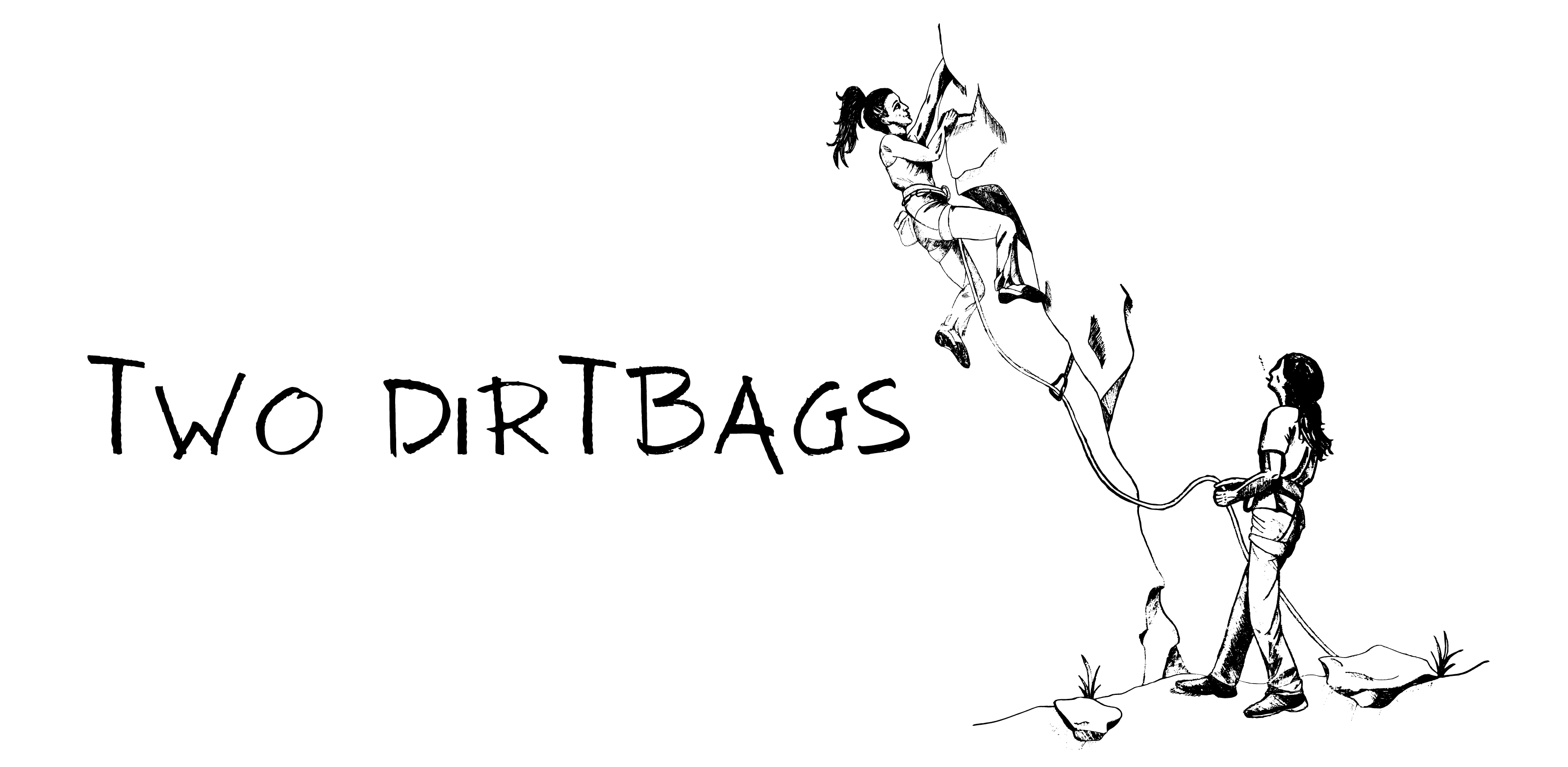
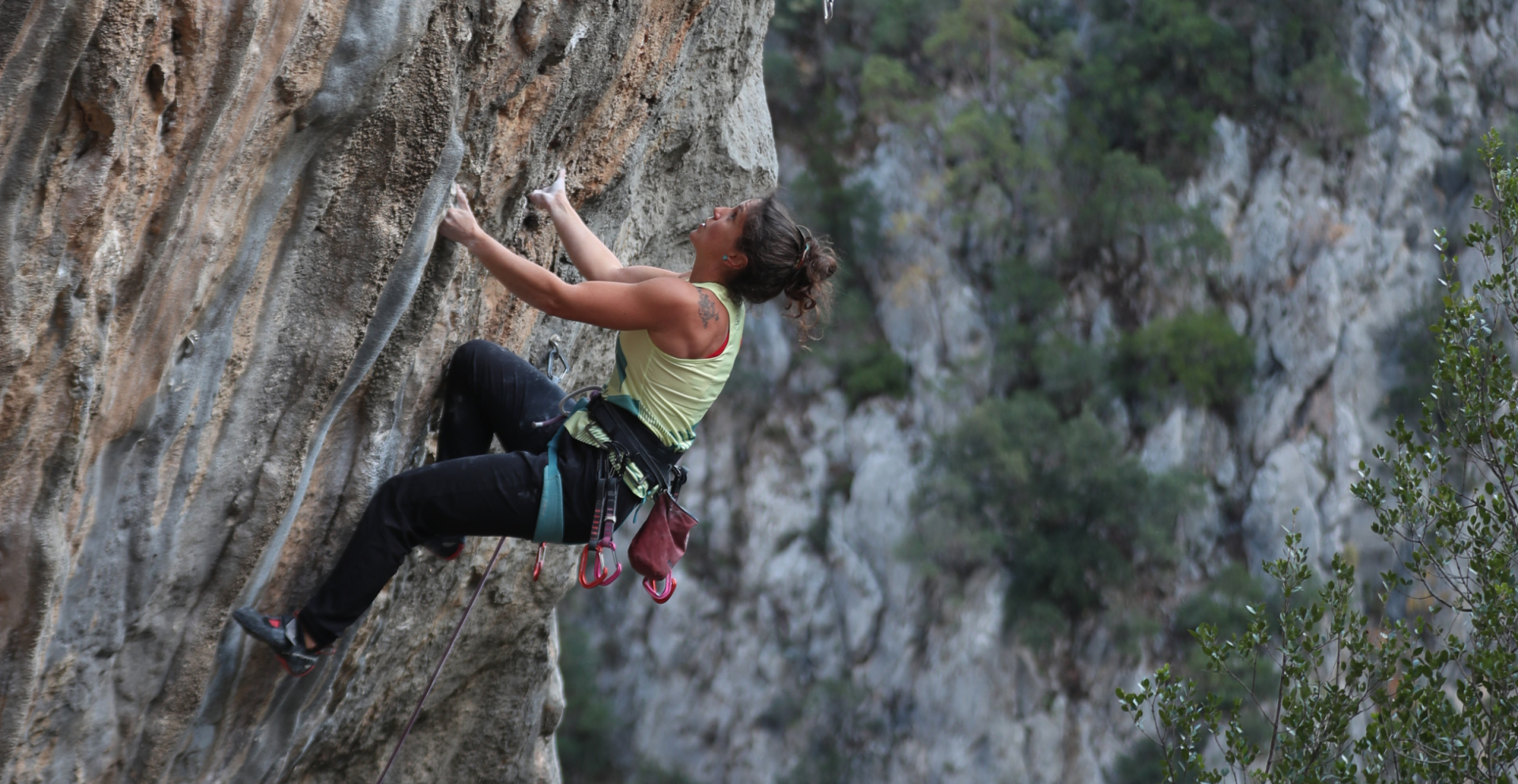
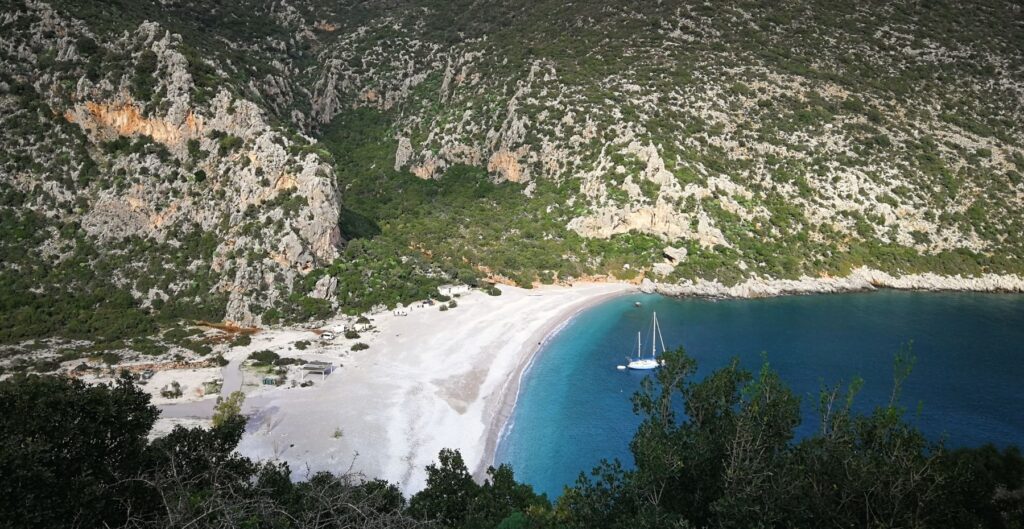
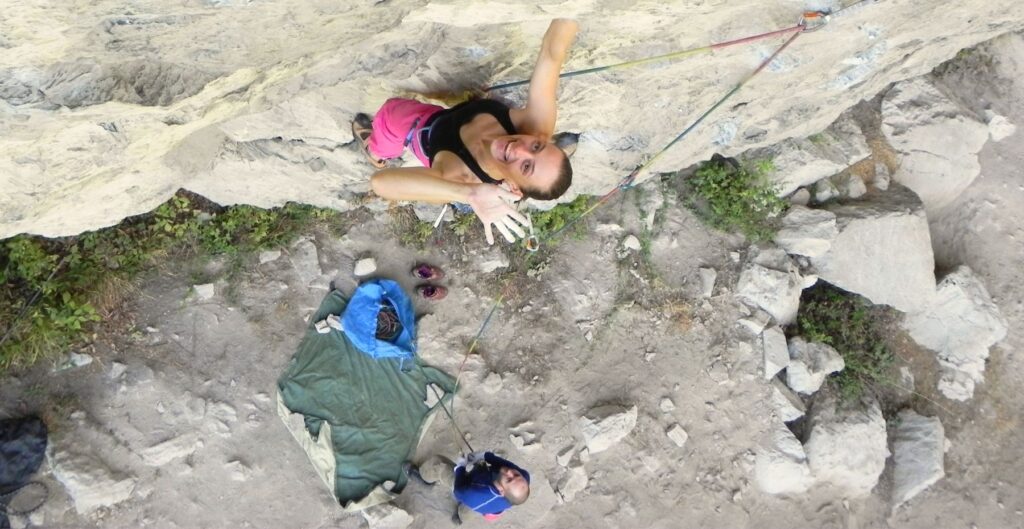
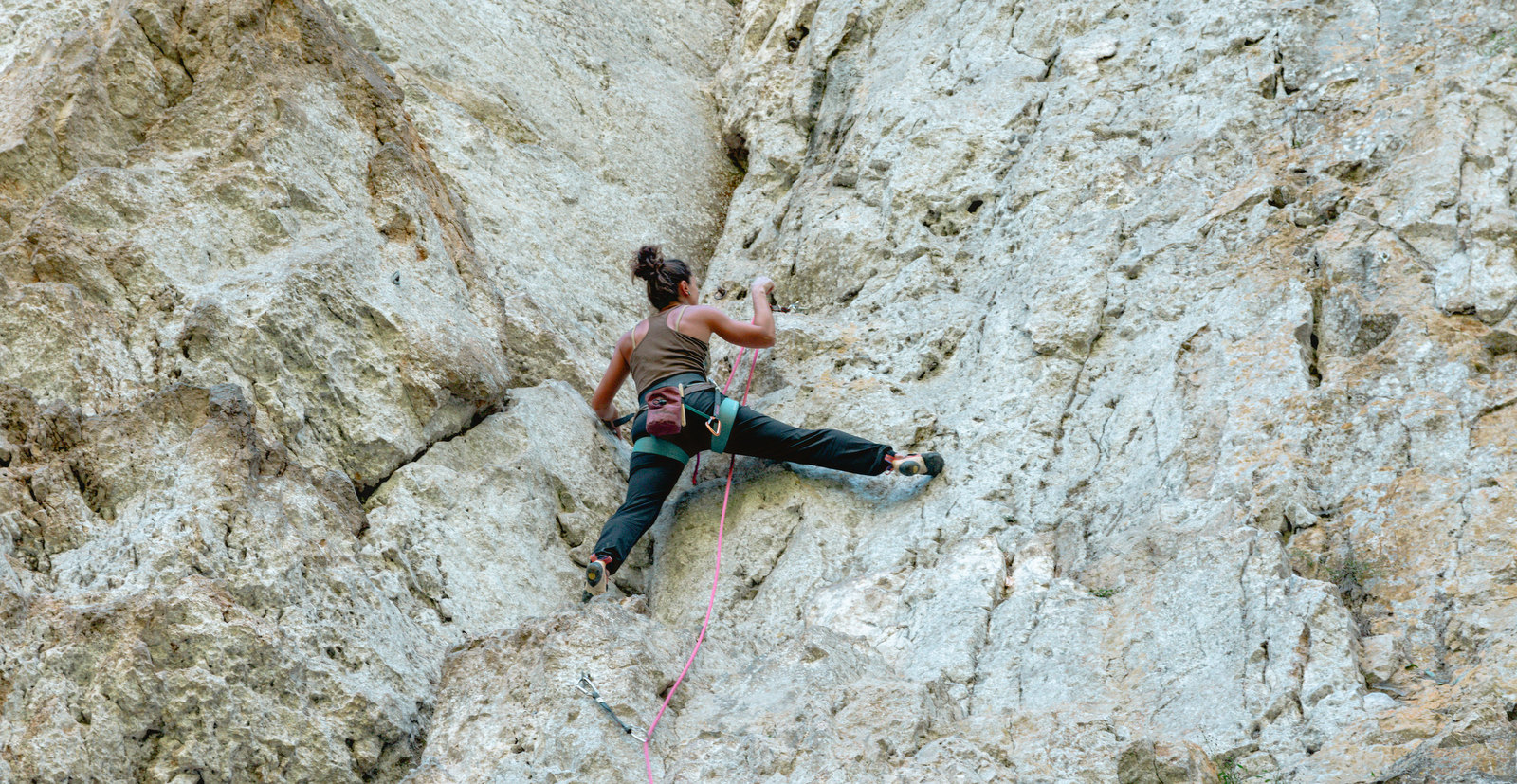
Pingback: 24 Best Destinations to Visit in Greece in 2024 | LooknWalk Greece